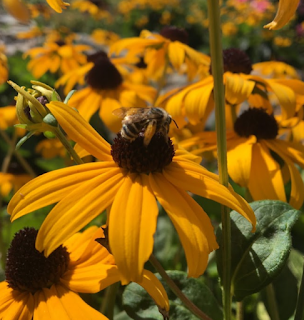by Yvette Henson
I was so excited to attend the annual Plant Select® Meeting this week. After 15 months of COVID restrictions, it was held in person at Denver Botanic Gardens! I thought I would share a few of the highlights of the meeting for me.
 |
It isn’t possible to pick a favorite part of the garden.
This is a view of the new Cactus Garden. |
 |
| Ross Shrigley, is the Executive Director of the Plant Select Program. |
 |
| Kelly D. Norris |
Kelly was followed by Panayoti Kelaidis, Senior Curator and Director of Outreach for Denver Botanic Gardens. Panayoti shared about the origins of the Plant Select® Program and the people and the plants that started it all. What was driven home to me was that the people are the most important, despite the love of plants.
 |
| Panayoti Kelaidis |
Katie Collins, City of Fort Collins and Deryn Davidson, CSU Extension Boulder County, shared the Top Ten Tips for Water Management, especially regarding Plant Select® plants. I was pleasantly surprised that they (as well as other presenters) encouraged us to taper off irrigation to our plants over time and that if the plants do not make it, that means they aren’t meant for our arid climate in Colorado. This practical talk was most helpful to me since we are currently installing a new irrigation system to our Plant Select® demonstration garden at the San Miguel Basin Fairgrounds in Norwood.
Katie Collins and Deryn Davidson
Lunch was followed by tours of different gardens led by garden horticulturists. We started with Dan Johnson at the Water-Smart Garden, followed by Mike Bone in the Steppe Garden, Sonya Anderson, at the Plant Select® Garden – Sonya also won and award this year for her contribution to the Plant Select® program. Then we went to the Rock Alpine Garden where Panayoti told us more about the evolution of that garden. We ended at the O’Fallon Perennial Walk with Bridget Blomquist. She told us her design plans to redo this garden.
The day ended with Dr Klett, David Staats and Ross Shrigley loading a few choice Plant Select® plants into our vehicles to plant in our local Plant Select® trial gardens. And then… I made my way back through the gardens for one last look.
 |
| Plant Select Border, Denver Botanic Gardens |
 |
| Water Smart Border, Denver Botanic Gardens |













